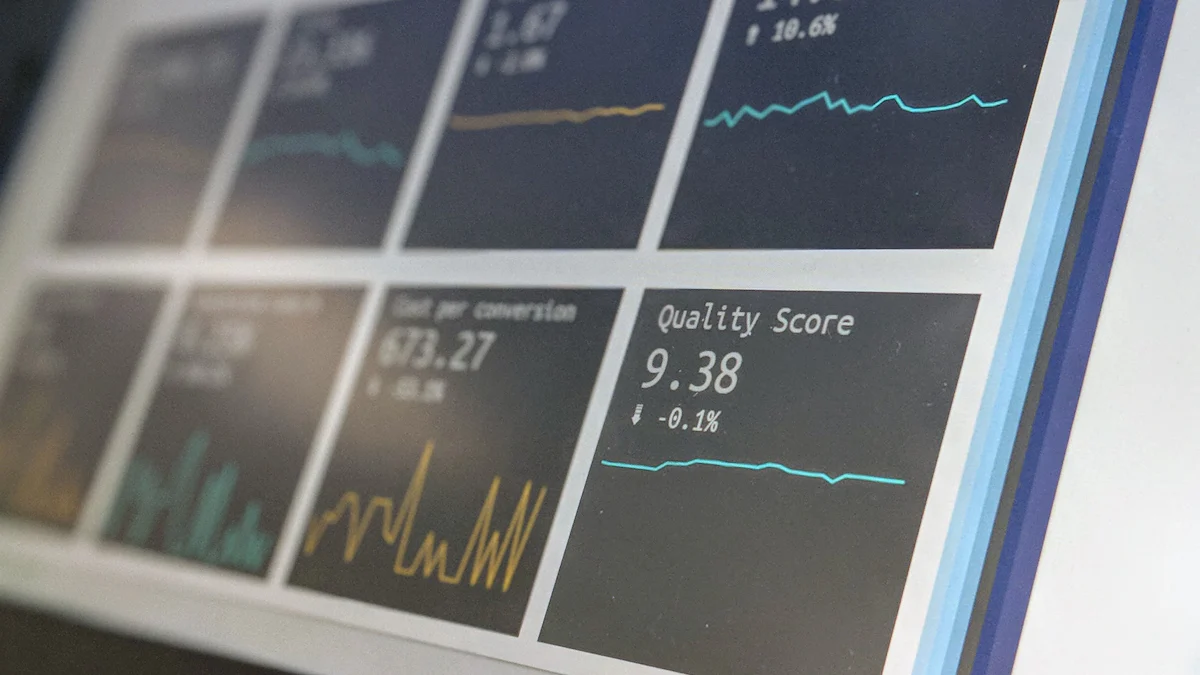

Conversion Cost plays a crucial role in transforming raw materials into finished products. Imagine your business as a giant machine. Conversion Cost fuels this transformation by covering direct labor and manufacturing overhead. Direct labor includes wages for workers directly involved in production. Manufacturing overhead encompasses costs like electricity and equipment maintenance. Understanding Conversion Cost helps you gauge production efficiency and manage expenses effectively. This knowledge can lead to smarter pricing strategies and improved financial performance.
Understanding Conversion Cost

Definition of Conversion Cost
Explanation of the term
Conversion Cost represents the total expenses needed to transform raw materials into finished products. You might think of Conversion Cost as the bridge between raw materials and a sellable product. This cost includes direct labor and manufacturing overhead. Direct labor involves wages for workers who physically create the product. Manufacturing overhead covers costs like electricity, equipment maintenance, and factory rent.
Importance in manufacturing
Understanding Conversion Cost is crucial in manufacturing. Conversion Cost helps you figure out how much it takes to produce each item. Knowing this cost allows you to set competitive prices for your products. Conversion Cost also provides insights into production efficiency. You can spot areas where you might be spending too much and make improvements.
Components of Conversion Cost
Direct Labor
Direct labor forms a significant part of Conversion Cost. Workers directly involved in making a product fall under this category. Think of assembly line workers or machine operators. Their wages contribute to the overall Conversion Cost. Monitoring direct labor costs helps you manage expenses better. You can identify if you're overstaffed or if workers need more training.
Manufacturing Overhead
Manufacturing overhead includes all other costs that keep the production process running. These costs do not directly tie to a specific product but are essential. Examples include utility bills, equipment depreciation, and factory maintenance. Efficient management of manufacturing overhead can lead to reduced Conversion Costs. Investing in energy-efficient machinery or negotiating better utility rates can help lower these costs.
Scientific Research Findings:
-
Research Findings on Conversion Costs in Manufacturing Efficiency highlight that Conversion Costs guide smarter production and profit margins.
-
Strategies to reduce Conversion Costs involve embracing technology through automation and refining processes via lean principles.
Importance of Conversion Cost
Role in Financial Reporting
Impact on financial statements
Conversion Cost plays a pivotal role in shaping financial statements. Accountants use Conversion Cost to determine the total cost of producing goods. This cost impacts the cost of goods sold on the income statement. Accurate reporting of Conversion Cost ensures that financial statements reflect true production expenses. Investors and stakeholders rely on these statements for decision-making.
Importance for investors
Investors look at Conversion Cost to assess a company's efficiency. Lower Conversion Costs indicate effective management and potential for higher profits. Investors prefer companies with optimized Conversion Costs. These costs provide insights into how well a company manages its resources. Understanding Conversion Cost helps investors make informed decisions about where to allocate their funds.
Influence on Product Pricing
Cost-based pricing strategies
Conversion Cost directly influences product pricing strategies. Companies often use cost-based pricing to set prices. This strategy involves adding a markup to the Conversion Cost. Accurate calculation of Conversion Cost ensures competitive pricing. Businesses can maintain profitability while offering fair prices to customers.
Competitive pricing
Competitive pricing requires a deep understanding of Conversion Cost. Companies analyze Conversion Costs to stay ahead in the market. Lower Conversion Costs allow businesses to offer better prices than competitors. This advantage can lead to increased market share. Efficient management of Conversion Cost supports sustainable pricing strategies.
Contribution to Production Efficiency
Identifying inefficiencies
Conversion Cost helps identify inefficiencies in production. Managers analyze these costs to pinpoint areas of waste. High Conversion Costs may signal inefficiencies in labor or overhead. Addressing these issues can lead to cost savings. Continuous monitoring of Conversion Cost supports lean manufacturing practices.
Process improvement
Process improvement relies on understanding Conversion Cost. Managers use Conversion Cost data to refine production processes. Reducing Conversion Cost often involves streamlining operations. Implementing technology and automation can lower these costs. Improved processes enhance overall production efficiency.
Practical Applications of Conversion Cost

Conversion Cost isn't just a number on a spreadsheet. It serves as a powerful tool for operations managers and strategic decision-makers. Let's dive into how you can use Conversion Cost to boost your business operations.
Use by Operations Managers
Monitoring production costs
Operations managers often keep a close eye on production costs. Conversion Cost helps you track these expenses effectively. You can see where money goes during the production process. This insight allows you to identify areas that need cost control. Regular monitoring ensures you stay within budget and avoid unexpected expenses.
Enhancing operational efficiency
Operational efficiency becomes a breeze with Conversion Cost data. You can pinpoint inefficiencies in labor or overhead. This information guides you in making necessary adjustments. Streamlining processes becomes easier when you know where the bottlenecks are. Improved efficiency often leads to higher productivity and lower costs.
Strategic Decision Making
Budgeting and forecasting
Budgeting and forecasting become more accurate with Conversion Cost insights. You can predict future expenses based on past data. This helps you allocate resources wisely. Accurate forecasts ensure you meet financial goals without overspending. Conversion Cost provides a solid foundation for making informed budget decisions.
Resource allocation
Resource allocation plays a crucial role in business success. Conversion Cost helps you determine where to invest resources for maximum return. You can decide whether to invest in new machinery or hire more staff. Proper resource allocation enhances productivity and profitability. Conversion Cost acts as a guide in making these critical decisions.
Strategies to Reduce Conversion Costs:
-
Embrace technology to automate repetitive tasks.
-
Implement lean principles to streamline operations.
-
Regularly review and adjust production processes.
Understanding and applying Conversion Cost can transform your business operations. You gain control over expenses and improve efficiency. This knowledge empowers you to make strategic decisions that drive growth and profitability.
Conversion costs play a vital role in transforming concepts into physical goods. Direct labor, indirect labor, and factory overhead costs make up these essential expenses. Understanding conversion costs helps you improve operational efficiency and boost profitability. Consider incorporating conversion costs into your business strategies for better decision-making. For further insights, explore resources that delve deeper into conversion costs and their impact on business success.
FAQ
Conversion cost includes the expenses needed to turn raw materials into finished products. These costs cover direct labor and manufacturing overhead. Think of it as the fuel that powers production.
Understanding conversion costs helps you manage production expenses. This knowledge allows you to set competitive prices and improve efficiency. Businesses can save money by identifying waste and optimizing processes.
Conversion costs play a big role in pricing strategies. Companies often use cost-based pricing, adding a markup to these costs. Accurate calculation ensures competitive pricing and maintains profitability.
Yes, conversion costs significantly impact financial statements. Accountants use these costs to determine the cost of goods sold. Accurate reporting reflects true production expenses, which investors rely on for decision-making.
Operations managers monitor these costs to track production expenses. Conversion costs help identify inefficiencies and guide process improvements. Managers can enhance operational efficiency by addressing bottlenecks.
Absolutely! Customer testimonials can boost conversion rates. Testimonials offer firsthand accounts of positive experiences, building trust in your brand. Visitors feel more confident in their purchase decisions after reading them.
"The impact of customer testimonials on website conversion rates can be significant." - abmatic.ai
Got more questions? Dive deeper into conversion costs and unlock new ways to optimize your business!
Continue Reading About Conversion Cost
10 Must-Have Marketing Agency Reporting Tools for Your Success
Optimize your agency's performance with top reporting tools. Explore analytics, social media, SEO, and more for data-driven decisions and efficiency.
Lewis
Oct 09, 2024
2025's Best Data Validation Tools: Top 7 Picks
Explore the top 7 data validation tools of 2025, featuring key features, benefits, user experiences, and pricing to ensure accurate and reliable data.
Howard
Aug 09, 2024
Which Data Analysis Projects Work Best for Beginners?
Ready to shine in 2025? Discover easy data analysis projects to boost your portfolio, learn data cleaning, visualization, and tackle real-world challenges!
Lewis
Mar 10, 2025
Business Data Analyst vs Business Analyst Key Differences Explained
Compare business data analyst vs business analyst roles, focusing on key differences, responsibilities, skills, and career paths to guide your career choice.
Lewis
Mar 11, 2025
Best Data Management Tools of 2025
Explore the best data management tools of 2025, including FineDataLink, Talend, and Snowflake. Learn about their features, pros, cons, and ideal use cases.
Howard
Aug 04, 2024
Creating an Excel Dashboard: Easy Steps for Beginners
Learn to create Excel dashboards with templates for easy data visualization and analysis. Perfect for beginners seeking efficient insights.
Lewis
Nov 05, 2024


